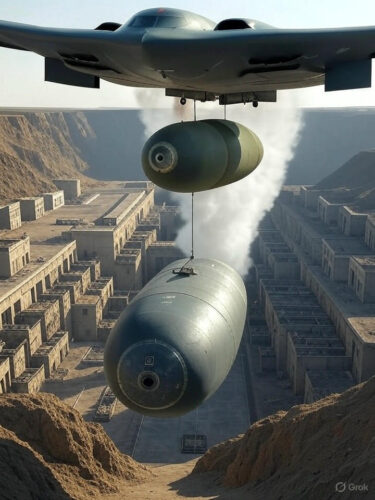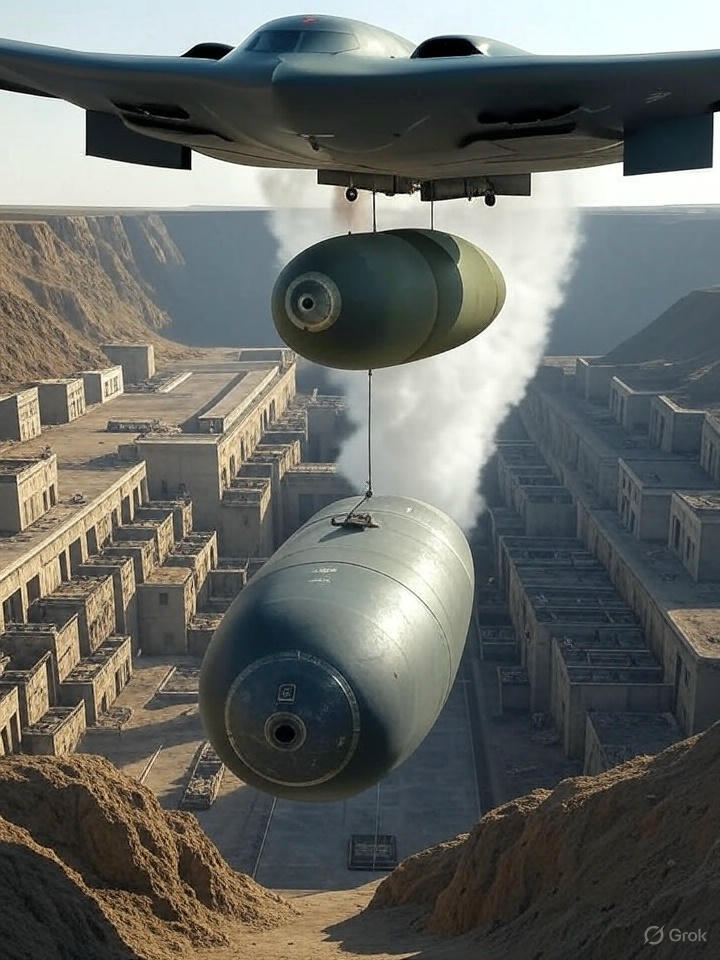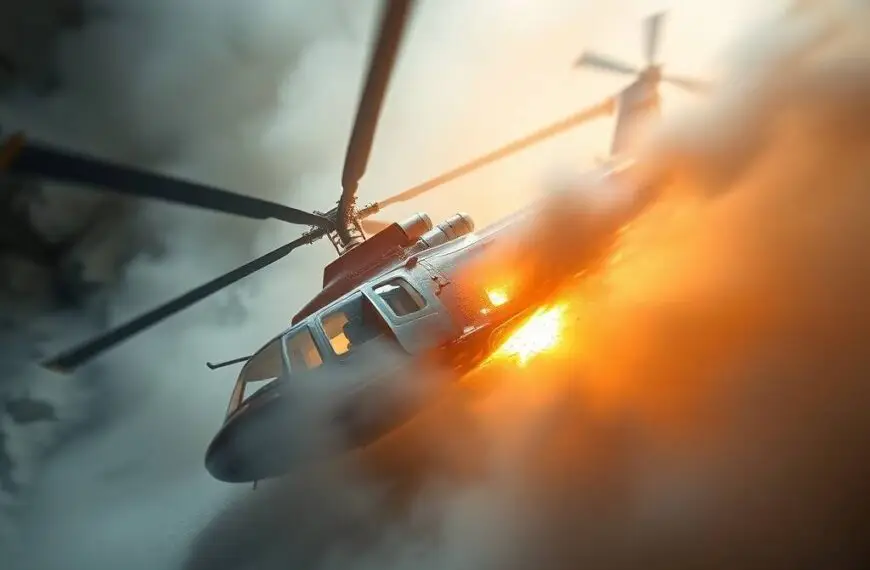
MOP Bunker Buster—a term now at the forefront of global security discussions—refers to the GBU-57 Massive Ordnance Penetrator, a 30,000-pound precision-guided bomb designed to destroy deeply buried and fortified targets. Recent reports indicate that Israel has intensified its diplomatic push for the United States to deploy this formidable weapon against Iran’s nuclear facilities, particularly the heavily fortified Fordow site, buried deep beneath a mountain. On June 21, 2025, the U.S. conducted airstrikes on three Iranian nuclear sites—Fordow, Natanz, and Isfahan—using B-2 Spirit bombers to drop 14 MOPs and 30 Tomahawk cruise missiles, marking the first operational use of the MOP. This escalation, described by U.S. officials as a “spectacular military success,” has sparked intense debate about its strategic implications, effectiveness, and the potential for further conflict in the Middle East.
MOP Bunker Buster: Why Israel Insists on Its Use
The MOP Bunker Buster is uniquely suited to penetrate Iran’s fortified nuclear infrastructure, a capability Israel lacks in its arsenal. The Fordow Fuel Enrichment Plant, located near Qom and buried up to 300 feet underground, is considered one of Iran’s most secure nuclear sites. Analysts argue that only the MOP, carried exclusively by U.S. B-2 stealth bombers, can effectively target such deeply buried facilities. Israel’s repeated appeals for the U.S. to deploy this weapon stem from its concerns over Iran’s nuclear ambitions, which Tehran insists are for civilian purposes. The Israeli government, wary of Iran’s potential to develop nuclear weapons, sees the MOP as a critical tool to neutralize this threat. But why is this bomb so pivotal, and what makes it different from other munitions?
The GBU-57 MOP, developed after the 2003 Iraq invasion, is the U.S. military’s most powerful non-nuclear weapon. Measuring 20.5 feet long and weighing 13,600 kilograms, it carries 5,300 pounds of high explosives and can penetrate up to 60 meters of concrete or earth before detonating. Unlike conventional bombs that explode on impact, the MOP’s delayed detonator allows it to burrow deep into fortified structures, making it ideal for targeting bunkers like Fordow. Israel’s own bunker-busting capabilities, such as the GBU-28, are less effective against such heavily protected sites, prompting its reliance on U.S. military support.
The Strategic Context: Israel’s Concerns and Iran’s Defiance
Israel’s insistence on using the MOP Bunker Buster reflects its broader strategic anxieties about Iran’s nuclear program. For years, Israel has conducted airstrikes against Iranian targets, including a June 13, 2025, attack on Fordow that caused only surface damage. These efforts, while significant, have not fully disrupted Iran’s nuclear capabilities, as facilities like Fordow remain largely impervious to conventional strikes. The U.S. intervention on June 21, involving seven B-2 bombers and a dozen MOPs, was a direct response to Israel’s lobbying, underscoring the deepening military coordination between the two allies.
Iran, however, maintains that its nuclear program is peaceful, a claim supported by the International Atomic Energy Agency, which has rejected assertions that Iran is on the verge of producing nuclear weapons. Tehran’s Foreign Minister Abbas Araghchi has condemned the U.S. strikes as a “flagrant violation of international law,” warning of “everlasting consequences.” This rhetoric raises questions: Could Iran retaliate, and if so, how? Some experts suggest Iran’s options are limited, given the precision and scale of the U.S. operation, but others warn of potential asymmetric responses, such as targeting U.S. bases or disrupting oil supplies in the Strait of Hormuz.
The MOP’s Unprecedented Power: A Game-Changer or a Risky Escalation?
The MOP Bunker Buster is a marvel of military engineering, but its use raises profound questions about its long-term impact. Designed to destroy “weapons of mass destruction located in well-protected facilities,” the MOP’s deployment against Fordow, Natanz, and Isfahan has been hailed by U.S. officials as a decisive blow to Iran’s nuclear ambitions. President Donald Trump, in a June 21 statement, claimed the strikes “completely obliterated” Iran’s key nuclear enrichment facilities. Yet, independent assessments of the damage remain unavailable, leaving open the possibility that Iran retains some nuclear capabilities, potentially hidden in secret underground sites.
The MOP’s operational debut also marks a significant escalation in the Israel-Iran conflict, which began intensifying earlier in June 2025. Israel’s strikes have killed over 600 people in Iran, according to human rights groups, while Iran’s missile attacks, including a June 19 strike on an Israeli hospital, have heightened tensions. The U.S.’s direct involvement, using the MOP and Tomahawk missiles, risks drawing it deeper into a conflict it had previously sought to avoid. Could this action destabilize the region further, or is it a necessary step to prevent a nuclear-armed Iran? The answers remain uncertain, fueling global curiosity about the next moves in this high-stakes chess game.
Global Reactions: Diplomacy Under Strain
The international community has responded with a mix of alarm and cautious diplomacy. The United Nations Secretary-General Antonio Guterres called the U.S. strikes a “dangerous escalation,” while France, the UK, and Germany issued a joint statement supporting Israel’s security but urging peace. Hamas, a key player in the region, condemned the strikes as a violation of international law, echoing Iran’s sentiments. Meanwhile, diplomatic efforts, such as Iranian Foreign Minister Araghchi’s meetings in Geneva with European counterparts, aim to de-escalate the conflict, though trust in U.S. intentions appears strained.
The use of the MOP Bunker Buster has also sparked economic concerns. Iran’s attacks on energy infrastructure, including the South Pars gas field, and the risk of a shutdown in its oil production could spike global oil prices. With the Strait of Hormuz—a critical chokepoint for oil shipments—under threat, the world watches anxiously. Could these strikes reshape global energy markets, or will diplomatic efforts restore stability? The interplay of military might and economic consequences keeps analysts guessing.
The Human Cost and Ethical Questions
Beyond strategy and geopolitics, the human toll of the MOP Bunker Buster strikes demands attention. Iranian state media reports over 430 deaths and 3,500 injuries from Israeli and U.S. attacks since early June. The strikes on Fordow, Natanz, and Isfahan, while targeting nuclear infrastructure, have disrupted communication for Iranian civilians, raising concerns among diaspora communities. In Israel, Iranian missile strikes have caused injuries and damage, though its Iron Dome system intercepted most attacks. How do these actions balance military objectives with humanitarian consequences? The question lingers as the conflict unfolds.
Ethically, the use of such a powerful weapon raises concerns about proportionality and long-term consequences. The MOP’s destructive force, while precise, could have unintended environmental or civilian impacts, particularly in densely populated areas near nuclear sites. Critics argue that escalating military action risks further radicalizing Iran’s leadership, potentially pushing it toward more aggressive nuclear pursuits. Supporters, however, see the MOP as a necessary deterrent, preventing a greater threat. This dichotomy fuels curiosity about whether the MOP’s use will achieve its intended goals or ignite a broader conflict.
What Lies Ahead: A Region on Edge
As the dust settles from the MOP Bunker Buster strikes, the world awaits Iran’s response. Will Tehran opt for retaliation, as its leaders have vowed, or pursue diplomatic channels to mitigate further escalation? The U.S., having entered the conflict directly, faces pressure to clarify its long-term strategy. President Trump’s hints at regime change, coupled with his “MAKE IRAN GREAT AGAIN” rhetoric, suggest a bold vision, but one fraught with risks. Could the MOP’s deployment mark a turning point in the Israel-Iran conflict, or is it merely a prelude to greater instability?
The MOP Bunker Buster has proven its technical prowess, but its strategic success remains uncertain. Israel’s insistence on its use reflects the high stakes of the nuclear question, while Iran’s defiance underscores the challenges of deterrence. As global leaders, analysts, and citizens watch this unfolding drama, one thing is clear: the MOP has not only penetrated concrete but also pierced the fragile veneer of Middle Eastern stability. What happens next will shape the region—and the world—for years to come.















